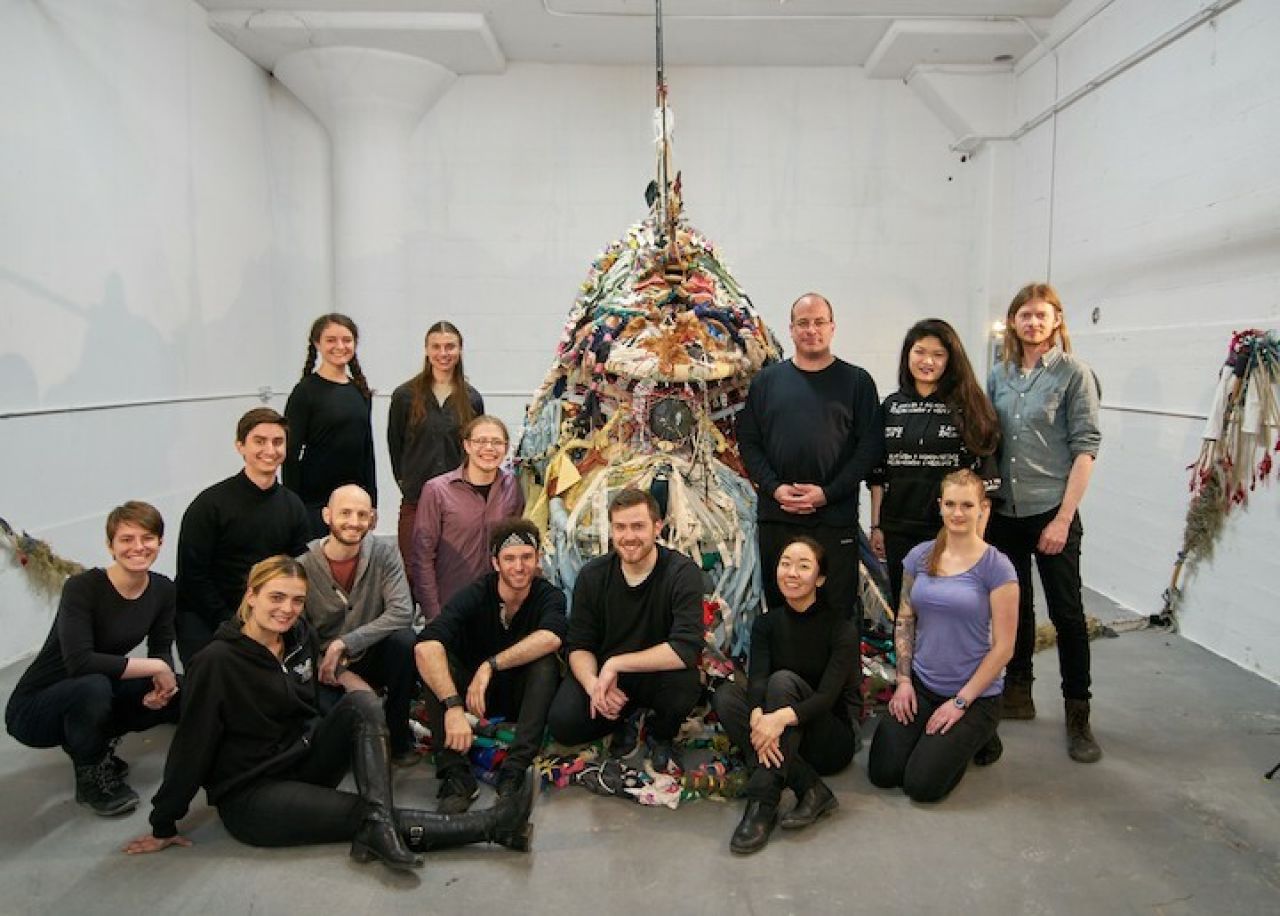June 27, 2019
Architecture-affiliated film project addresses the power of memory through community-generated content

James Kalsbeek, Penn State professor of architecture in the Stuckeman School, has joined forces with a Brooklyn-based film crew to create a film rooted in storytelling, loss and memory. The Molok, "an independent film and art project that collects and archives the cherished objects and stories of its audience," begins filming in Centre Hall, Pennsylvania on July 1 and continues through Arts Festival weekend with community events being hosted at The Workshop, a collaborative space for experimental art, design and performance that Kalsbeek founded in Centre Hall to host projects like The Molok.
"It's a story about the demolition and resurrection of a community," explained Kalsbeek, whose research is rooted in memory and architecture.
The film features a character, Molok, from another realm that feeds on memories attached to meaningful possessions. Molok is a kinetic sculpture, commissioned by director Sam T. Wilson and executive producer Xander Chauncey, the co-creators of the film and character, that has been constructed by Penn State School of Visual Arts alumna, artist Annalisa Barron (2013). The Molok team has collected items and their respective stories from donors across the globe, literally building Molok from audience participation in order to create an immersive experience and foster a new community in the process.
"It's been an inspiring experience watching so many communities and individuals band together to not only build this puppet, but help us create the film!" noted Molok producer Nancy Pop.
The team relied upon crowdfunding to launch the project, initially raising $10,000 through Indiegogo, and then gaining fiscal sponsorship from The New York Foundation for the Arts and From the Heart Productions. In order to acknowledge the contributions of their supporters, Wilson and Chauncey have decided to list them in the credits as contributors, producers and other types of participants in the film, revolutionizing the way in which a film becomes a community-based project rather than a studio product.
While the team is still in need of financial and in-kind support, Kalsbeek has already enlisted local organizations and individuals to contribute in various ways. Gather & Co. Sustainable Catering, a local company headed by Rebecca Larsen, will be providing on-set meals for the entire team. Local homeowners have donated housing and transportation for the puppet company, principal actors and crew. Several local college students and Penn State alumni have also agreed to work as production assistants on the film. Alpha Fire Company and Encompass Health Rehabilitation Hospital of Nittany Valley have also donated their facilities for use in the production.
Along with Kalsbeek (the film's location manager and architect) and his supporters, the team includes Emmy Award-winning lighting designer Bill Diamond, Broadway star Tom Hewitt, puppeteer Leah Hofmann, sound artist Harold Taddy, cinematographer Edna Biesold and set designer/puppeteer Laurencio Carlos Ruiz.
The Molok project will continue as an online archive, a book, a touring art installation and eventually, a feature-length film. People will have a chance to view and experience all of the stories that were collected to bring this creature to life on and off screen.
For more information about the film, programming, or to contribute, visit The Molok's website, www.themolok.com or follow them on Instagram (@themolok).
